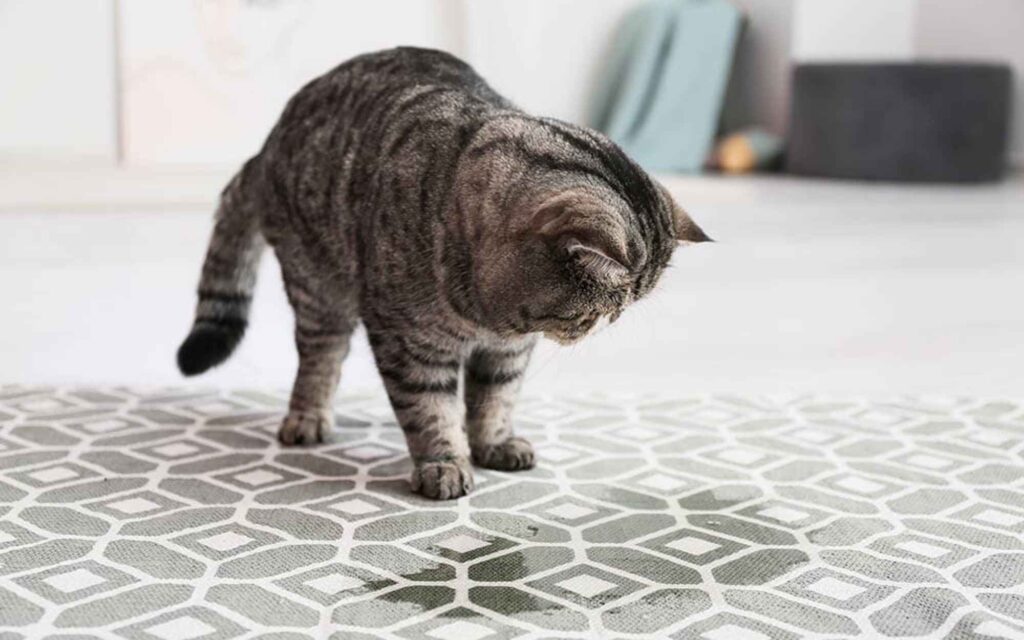If you’ve ever wondered why cat urine smell lingers in concrete, you’re not alone. This pungent odor can haunt garages, patios, basements—even long after the accident happened. Despite multiple cleanings, the smell keeps returning, making you question if it will ever go away.
Understanding the Composition of Cat Urine
What makes cat urine so potent?
Cat urine is made up of urea, uric acid, ammonia, electrolytes, and waste products. When exposed to air, the urea breaks down into ammonia, giving it that strong, unmistakable smell. But what really causes the long-term issue is uric acid.
Uric acid and its long-lasting effects
Unlike other compounds, uric acid forms crystals that are insoluble in water. These crystals embed themselves deep within porous surfaces, like concrete. The result? A smell that seems impossible to eliminate—unless you use the right methods.
Why Concrete Traps and Holds Cat Urine Odor
Porosity of concrete explained
Concrete might look solid, but it’s actually full of tiny pores and capillaries. When your cat urinates on it, the liquid sinks deep into these channels. Surface cleaning just doesn’t reach the problem at its source.
Reactivation with moisture and heat
Even after a thorough cleaning, a change in humidity or temperature can cause uric acid crystals to reactivate, releasing the foul odor again.

Common Cleaning Mistakes That Make the Smell Worse
Using bleach or vinegar
A common misconception is that bleach or vinegar will kill the smell. In reality:
-
- Bleach reacts with ammonia, creating toxic fumes.
-
- Vinegar neutralizes surface odors temporarily but doesn’t reach uric acid embedded in the concrete.
We’ve explained this fully in our blog: Does Bleach Work for Cat Urine on Concrete? Myths vs Facts
Incomplete surface cleaning
Another mistake? Just wipe the surface with soap or disinfectant. This doesn’t penetrate concrete pores, so the smell keeps coming back.
Effective Solutions to Neutralize Cat Urine Odor in Concrete
Enzyme-based products
The only proven solution for cat pee in concrete is enzymatic cleaning. These cleaners contain live bacteria that break down uric acid crystals, effectively neutralizing the smell at its source.
Commercial vs DIY cleaning
-
- DIY: Use enzymatic products with a scrub brush and patience. Multiple treatments may be needed.
-
- Professional: Faster and more effective with commercial tools like extractors and steamers.
Curious which route is better? Check out: DIY vs Professional Cleaning: What’s Better for Cat Urine on Concrete?
Step-by-Step: How to Remove Cat Pee Smell from Concrete
Here’s a simplified version of the method from our How to Get Cat Urine Out of Concrete guide:
-
- Blot and clean the surface
-
- Apply enzyme cleaner liberally
-
- Let sit for 24+ hours
-
- Scrub with a bristle brush
-
- Repeat if necessary
-
- Allow concrete to dry completely
- Allow concrete to dry completely
Best Products to Remove Cat Urine Smell from Concrete
Here are a few of the top products you can trust:
-
- Rocco & Roxie Professional Strength
-
- Bubba’s Rowdy Friends Cleaner
-
- Nature’s Miracle Hard Floor Cleaner
-
- OdoBan Industrial Odor Eliminator
- OdoBan Industrial Odor Eliminator
Read full details and comparisons in: 10 Best Products to Remove Cat Urine from Concrete Floors
Preventing the Odor from Returning
Using sealers
Once your floor is clean, protect it by applying a pet-safe concrete sealer. This prevents future urine from soaking into the surface.
Cat behavior correction
-
- Ensure litter boxes are clean and accessible
-
- Use pheromone sprays or diffusers to reduce marking
-
- Address anxiety or territorial issues with a vet’s help
Frequently Asked Questions (FAQs)
Why does cat pee smell worse over time?
Because uric acid reactivates with humidity or heat. Over time, it continues to release odor unless fully removed using enzymatic cleaners.
Can air fresheners eliminate urine odor?
No. Air fresheners only mask the smell temporarily. They don’t remove the uric acid that causes the lingering odor.
Does sealing concrete stop urine smell?
Only after thoroughly cleaning and neutralizing the area. Sealing prevents future absorption but won’t fix an untreated odor problem.
Don’t Just Mask the Smell—Eliminate It
The lingering odor of cat urine in concrete isn’t a mystery anymore. It’s caused by uric acid, which embeds itself in porous surfaces and reactivates over time. But with the right products and methods, you can completely remove the smell—not just cover it up.
Take control with proven enzymatic solutions, avoid common myths like vinegar and bleach, and seal your surface to prevent future issues.



